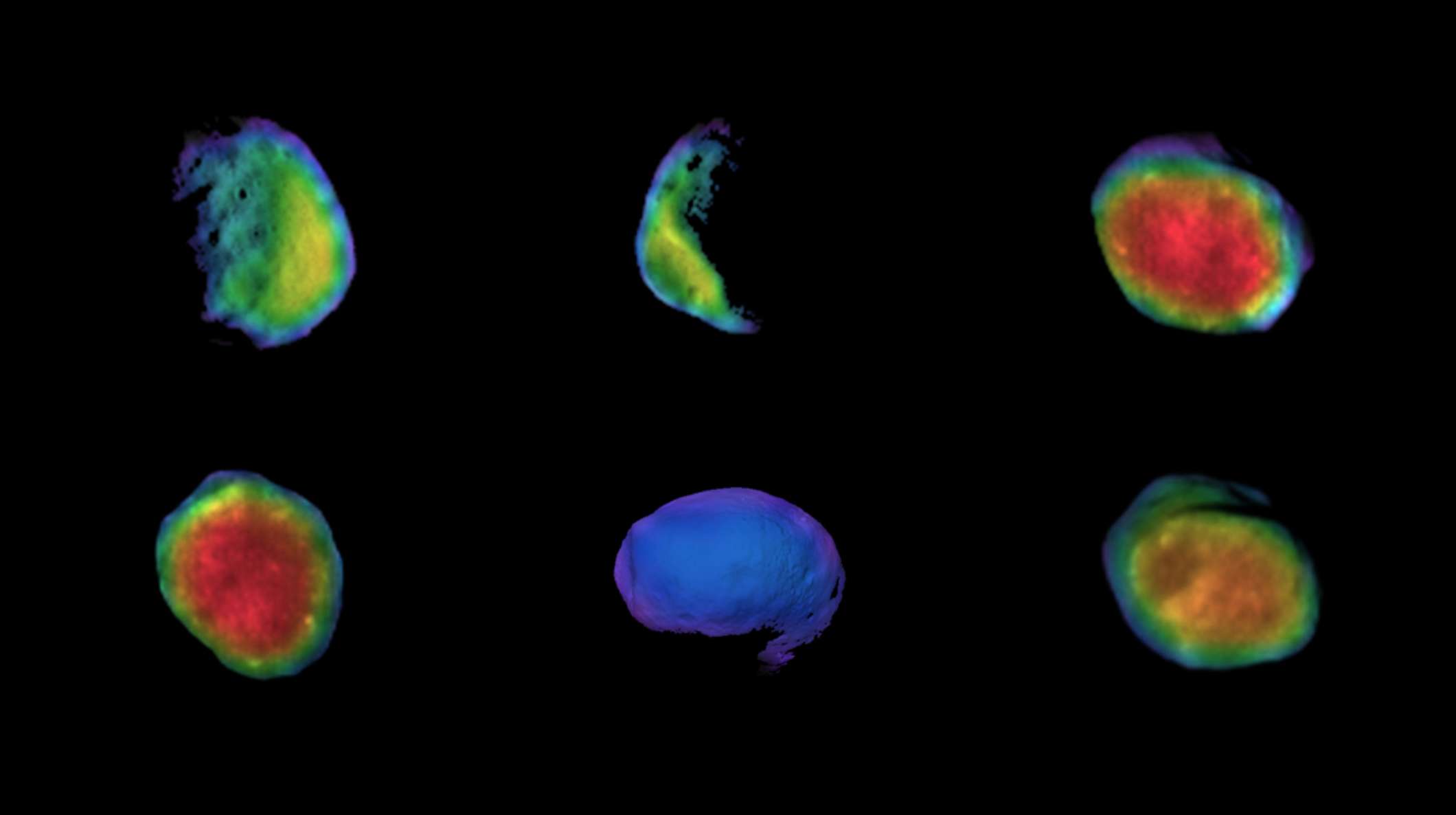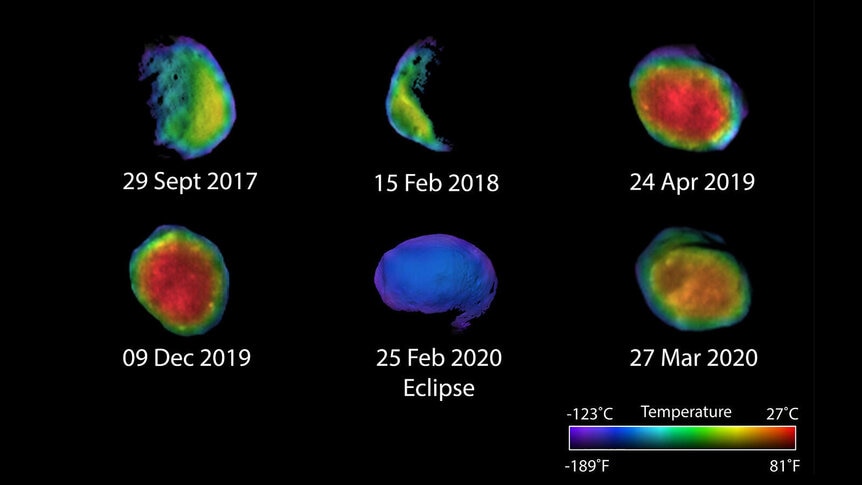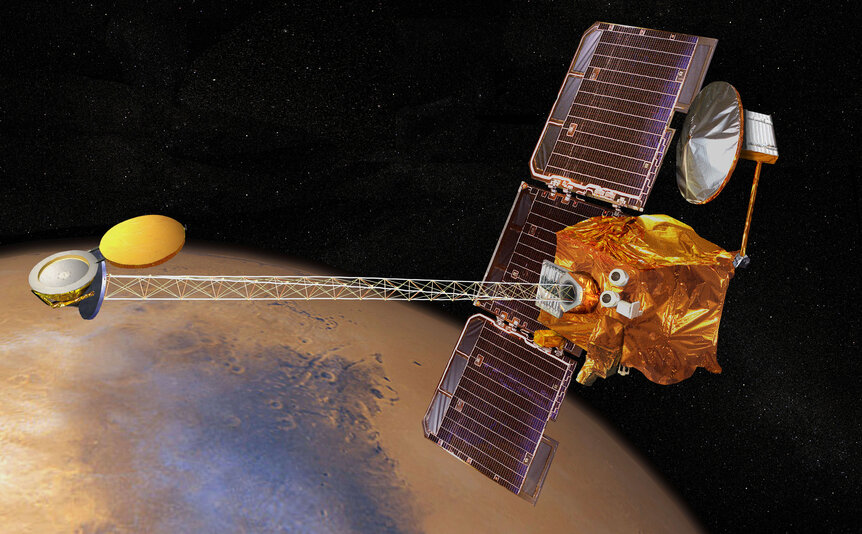Create a free profile to get unlimited access to exclusive videos, sweepstakes, and more!
NASA probe captures new rainbow-hued thermal images of Mars' moon Phobos

Appearing like a lumpy pieces of Willy Wonka candy, these fresh images of Mars' biggest moon, Phobos, paint an eyecatching picture of the lumpy, odd-shaped satellite using NASA's Odyssey orbiter's Thermal Emission Imaging System (THEMIS).
Phobos is the larger and innermost of the Red Planet's two moons, the second being the smaller object, Deimos. It circles Mars just 3,700 miles above its surface and loops around the planet three times per day, crossing the entire sky in just under four hours. It's the closest moon to its home planet than any other heavenly body in the solar system.
This trio of colorful new shots of the Martian moon Phobos were captured over the past winter and this spring, and expose extreme temperature variations within the rough-hewn moon as it travels in and out of Mars' prominent shadow.
Using the long-running craft's Thermal Emission Imaging System to measure heat signatures across Phobos' surface, scientists are able to discern the moon's internal composition and physical properties. The ongoing debate on whether it's a snagged asteroid or a hunk of Mars torn from its crust might be finally settled after more research is conducted using these illuminating new photos.
Added to three previously-gathered images, NASA's comprehensive observations present waxing, waning and full views of Phobos. Crescent phases of the moon will begin in upcoming months, giving Odyssey's dedicated ground crew a complete spectrum of Phobos' surface warming and cooling while it spins.
Mars Odyssey launched from Earth on April 7, 2001 and arrived at the Red Planet on October 21, 2001. The mission is headed up by NASA's Jet Propulsion Laboratory in Southern California with its primary objective to investigate the surface of Mars. Thousands of images per month are delivered back to the team at JPL, offering a wealth of detailed evidence of Mars' makeup.
"We're seeing that the surface of Phobos is relatively uniform and made up of very fine-grained materials," explained image processing and analysis leader Christopher Edwards of Northern Arizona University in Flagstaff. "These observations are also helping to characterize the composition of Phobos. Future observations will provide a more complete picture of the temperature extremes on the moon's surface."
First discovered by American astronomer Asaph Hall on August 6, 1877, only six days after the scientist located the tinier brother moon, the 15-mile-long Phobos is believed to be composed of material similar to that often seen in asteroids and dwarf planets. Theories also include the possibility that the pocked, potato-shaped satellite might have been created from interstellar dust and rock or as a result of some ancient Martian impact. Phobos is named after the son of the Greek God of War, Ares, and its translated meaning is fear.
Due to its low synchronous orbital path of Mars, the moon continues to be drawn closer to the planet. Phobos' doomed existence will eventually end with its obliteration or collision with Mars in 30-50 million years. NASA's Mariner 9 probe was the space agency's first orbital mission to Mars, and also the first to snap close-up photos of both Phobos and Deimos in 1971.





























